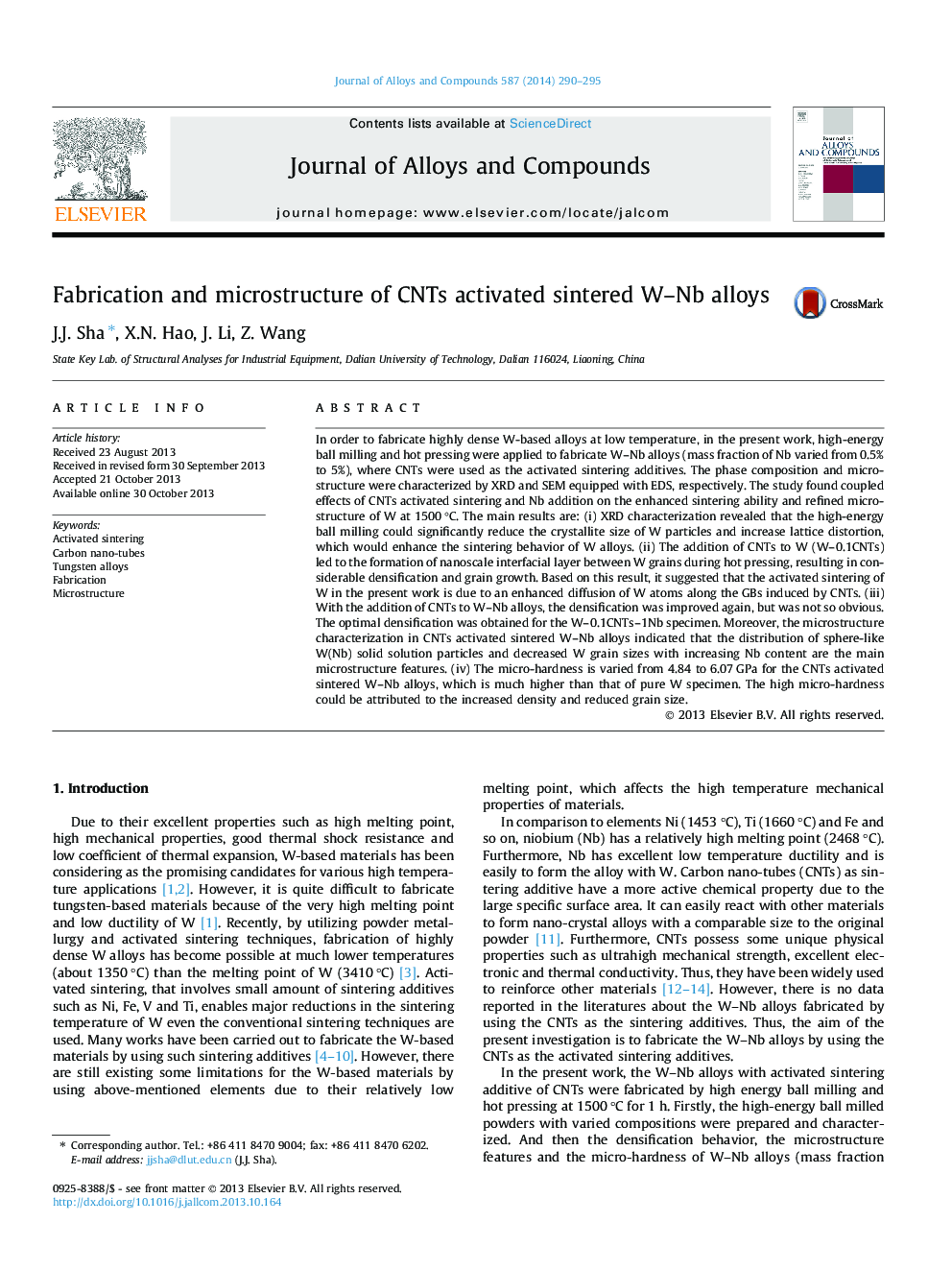| کد مقاله | کد نشریه | سال انتشار | مقاله انگلیسی | نسخه تمام متن |
|---|---|---|---|---|
| 1612304 | 1516306 | 2014 | 6 صفحه PDF | دانلود رایگان |
عنوان انگلیسی مقاله ISI
Fabrication and microstructure of CNTs activated sintered W-Nb alloys
دانلود مقاله + سفارش ترجمه
دانلود مقاله ISI انگلیسی
رایگان برای ایرانیان
کلمات کلیدی
موضوعات مرتبط
مهندسی و علوم پایه
مهندسی مواد
فلزات و آلیاژها
پیش نمایش صفحه اول مقاله

چکیده انگلیسی
In order to fabricate highly dense W-based alloys at low temperature, in the present work, high-energy ball milling and hot pressing were applied to fabricate W-Nb alloys (mass fraction of Nb varied from 0.5% to 5%), where CNTs were used as the activated sintering additives. The phase composition and microstructure were characterized by XRD and SEM equipped with EDS, respectively. The study found coupled effects of CNTs activated sintering and Nb addition on the enhanced sintering ability and refined microstructure of W at 1500 °C. The main results are: (i) XRD characterization revealed that the high-energy ball milling could significantly reduce the crystallite size of W particles and increase lattice distortion, which would enhance the sintering behavior of W alloys. (ii) The addition of CNTs to W (W-0.1CNTs) led to the formation of nanoscale interfacial layer between W grains during hot pressing, resulting in considerable densification and grain growth. Based on this result, it suggested that the activated sintering of W in the present work is due to an enhanced diffusion of W atoms along the GBs induced by CNTs. (iii) With the addition of CNTs to W-Nb alloys, the densification was improved again, but was not so obvious. The optimal densification was obtained for the W-0.1CNTs-1Nb specimen. Moreover, the microstructure characterization in CNTs activated sintered W-Nb alloys indicated that the distribution of sphere-like W(Nb) solid solution particles and decreased W grain sizes with increasing Nb content are the main microstructure features. (iv) The micro-hardness is varied from 4.84 to 6.07 GPa for the CNTs activated sintered W-Nb alloys, which is much higher than that of pure W specimen. The high micro-hardness could be attributed to the increased density and reduced grain size.
ناشر
Database: Elsevier - ScienceDirect (ساینس دایرکت)
Journal: Journal of Alloys and Compounds - Volume 587, 25 February 2014, Pages 290-295
Journal: Journal of Alloys and Compounds - Volume 587, 25 February 2014, Pages 290-295
نویسندگان
J.J. Sha, X.N. Hao, J. Li, Z. Wang,